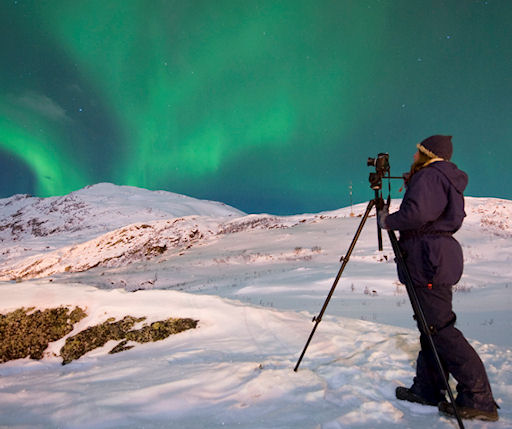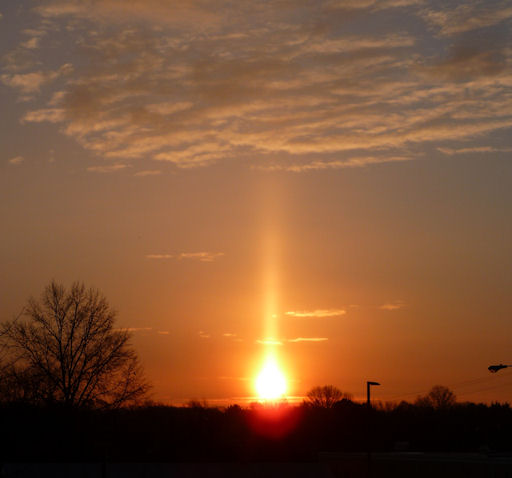Turn your cell phone into a field-tested satellite tracker. Works for Android and iPhone. | | |
ASTEROID FLYBY: Newly-discovered asteroid 2011 AN52 is flying past Earth today just inside the orbit of the Moon (0.8 LD). The space rock is only 8 meters wide, about the size of a small room, so even experienced amateur astronomers will have trouble photographing it as it zips through the northern constellations Draco and Cygnus glowing like an 18th magnitude star. But it is there: 3D orbit, ephemeris.
AURORAS, NON-STOP: "The beauty of the Arctic is in full swing," says photographer Fredrik Broms of Kvaløya, Norway. "Strong auroras have been observed each night for a full week now, beginning after nightfall and going on most of the night until early morning. A particularly nice display came on Jan. 13th when the sky exploded in green and purple. Bright moonlight only added to the beauty." As an example, he offers this shot of "a very happy aurora watcher" in the Norwegian mountains:

The non-stop display might be coming to a temporary end. Earth is exiting the solar wind stream that sparked the brightest lights, and the next stream is not due to arrive until Jan. 19-20. Photographers, take this opportunity to recharge your cameras and, of course, be alert for auroras.
UPDATED: January 2011 Aurora Photo Gallery
[previous Januaries: 2010, 2009, 2008, 2007, 2005, 2004]
SUN PILLAR: "Yesterday at sunrise, a column of light jumped straight up from the sun," says Shulamit Widawsky of Fairfax, VA. "It was not a result of the photography. It really looked like this with the naked eye, and lasted for at least ten minutes. What do you call it?" Scroll down for the answer:

This is called a "sun pillar." It is caused by plate-shaped ice crystals fluttering to Earth like leaves falling from trees. Air resistance causes the flat faces of the ice crystals to line up almost parallel to the ground. They catch the light of the morning sun and spread it into a brilliant vertical column. The source of the crystals may be seen in Widawsky's snapshot: icy clouds just above the pillar are responsiible for the display. With air temperatures in the northern hemisphere regularly dipping below freezing, this is a good time of year to see the phenomenon. Look for sun pillars are sunrise and sunset!
more sun pillars: from Chris Deutsch of Effort, Pennsylvania; from Daryl Pederson of south central Alaska; from Robbert-Jan Westerduin of Nijmegen, The Netherlands
Solar Eclipse Photo Gallery
[NASA: Hinode Observes Annular Solar Eclipse]
Potentially Hazardous Asteroids (
PHAs) are space rocks larger than approximately 100m that can come closer to Earth than 0.05 AU. None of the known PHAs is on a collision course with our planet, although astronomers are finding
new ones all the time.
On January 17, 2011 there were 1183 potentially hazardous asteroids.
Notes: LD means "Lunar Distance." 1 LD = 384,401 km, the distance between Earth and the Moon. 1 LD also equals 0.00256 AU. MAG is the visual magnitude of the asteroid on the date of closest approach. | | The official U.S. government space weather bureau |
| | The first place to look for information about sundogs, pillars, rainbows and related phenomena. |
| | Researchers call it a "Hubble for the sun." SDO is the most advanced solar observatory ever. |
| | 3D views of the sun from NASA's Solar and Terrestrial Relations Observatory |
| | Realtime and archival images of the Sun from SOHO. |
| | from the NOAA Space Environment Center |
| | the underlying science of space weather |

